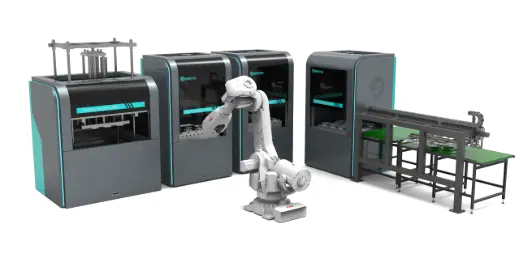
The disposable plate making machine has undergone significant transformations, driven by advancements in technology and the pressing need for sustainability in manufacturing. Over the decades, these machines have evolved from rudimentary setups to highly sophisticated systems, effectively bridging the gap between productivity and environmental responsibility.
Early Developments in Disposable Plate Manufacturing
Initially, disposable plate production relied heavily on manual operations and basic machinery. These early iterations prioritized simplicity over efficiency, often resulting in high material waste and inconsistent product quality. Machines were primarily designed to process plastic, a material known for its durability but detrimental environmental impact. While these devices laid the groundwork for modern advancements, their ecological drawbacks sparked the pursuit of more sustainable solutions.
Integration of Automation
Automation marked a pivotal moment in the evolution of the disposable plate making machine. The integration of programmable logic controllers (PLCs) and advanced mechanical systems improved production speed, precision, and uniformity. By minimizing human intervention, automated machines reduced operational errors and enhanced overall efficiency. Furthermore, they enabled manufacturers to scale production while maintaining consistent quality standards.
Emphasis on Eco-Friendly Raw Materials
The growing global focus on environmental preservation catalyzed a shift toward renewable and biodegradable raw materials. Modern machines now process materials such as bagasse, bamboo pulp, and recycled paper, significantly reducing the carbon footprint of disposable plate production. These innovations have redefined industry standards, aligning manufacturing practices with sustainable development goals.
Energy-Efficient Designs
Another critical evolution in sugarcane bagasse tableware making machine is the emphasis on energy efficiency. Contemporary models incorporate energy-saving technologies, such as variable frequency drives (VFDs) and optimized heating systems. These features not only reduce electricity consumption but also lower operational costs, making sustainability a financially viable option for manufacturers.
Advanced Features in Modern Machines
Today’s biodegradable plate making machine are equipped with cutting-edge features, such as:
- Multi-functional capabilities – Machines now produce plates of varying shapes, sizes, and thicknesses, catering to diverse market needs.
- Automated waste management systems – Integrated mechanisms ensure minimal raw material waste and efficient recycling of production by-products.
- Digital monitoring systems – Real-time data analytics and remote monitoring enhance operational control and predictive maintenance.
These advancements have transformed disposable plate manufacturing into a streamlined, high-tech process that aligns with contemporary environmental demands.
Future Trajectory of the Industry
As sustainability continues to dominate global priorities, the evolution of the bagasse pulp molding machine is far from complete. Future developments will likely focus on zero-waste production, increased reliance on renewable energy, and further integration of smart technologies. The convergence of artificial intelligence and machine learning with plate-making processes promises to revolutionize the industry further, enabling adaptive systems capable of optimizing every aspect of production.
Conclusion
The disposable plate making machine exemplifies the progress that can be achieved through technological innovation and environmental consciousness. Its evolution reflects the broader trends shaping modern manufacturing, emphasizing efficiency, versatility, and sustainability. As these machines continue to adapt to the challenges of a resource-constrained world, they stand as a testament to the potential of sustainable industrial practices.

